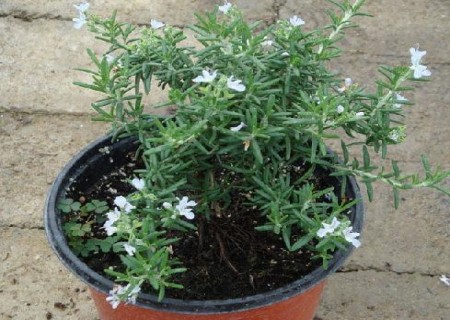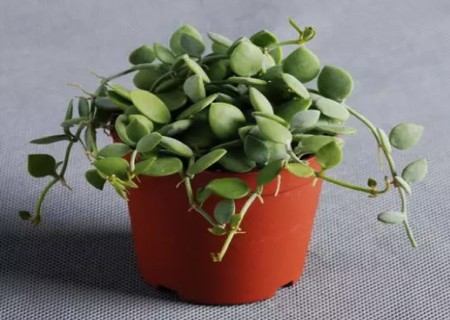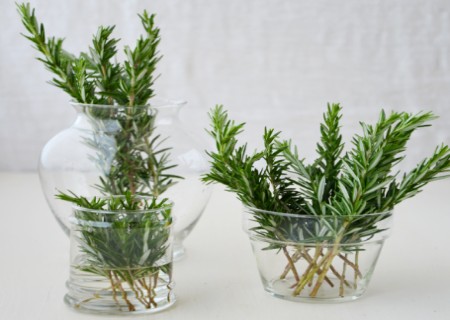How to sow Rosemary-the sowing method of Rosemary
"you smile in the wind and smell like rosemary." There are not a few people who have heard this song. Rosemary as a plant with fresh aroma, a variety of air fresheners and spices using it as raw materials are also common in the market.
Rosemary has a cool grass-like smell and sweet camphor smell, slightly irritating, has been used to improve and strengthen memory since ancient times, until today Greek students make rosemary tea at home before exams, because its unique fragrance can make people energetic. So how do you sow rosemary?

Rosemary germinates slowly and the germination rate is low when the seed is propagated. According to the literature, when the germination temperature is between 20 ℃-24 ℃, the germination rate is less than 30%, and the germination time is as long as 3-4 weeks, but if it is germinated one week before 20 ℃-24 ℃ and then treated at 4.4 ℃ for 4 weeks, the germination rate can be increased to 70%.
Sowing seeds from March to April or September, but the germination rate is low and the germination time is long. Rosemary seed propagation is generally carried out in the greenhouse in early spring, either by soil method or by burrow tray.
1. Raising seedlings by native method
In order to raise seedlings by soil method, the seedbed should be arranged first, and the seedbed can be flat bed or small high bed. The bed soil should be crushed and raked, fermented and watered, sowed or sowed, but the seeds should be sowed sparsely or mixed well with fine dry soil, sowed on the seedling bed and poured with small water to make the seeds fully contact with the soil.
The seeds have good light, and the seeds are sown directly on the medium without mulching, and a small arch shed is built on the border surface, which not only ensures the ground temperature, but also makes the soil surface difficult to harden.
Seeds are developed by the water at the bottom of the seedling bed, but keep the soil surface moist all the time. Wait for the top of the bud to be unearthed and then watered, based on the principle of diligent irrigation with small water. The optimum temperature for seed germination is 15-20 degrees Celsius. Sprouting in about 2-3 weeks. When the seedling grows to about 10 cm, about 70 days, it can be planted.
2. Raising seedlings with acupoint tray.
To raise seedlings in a burrow plate, mix peat and vermiculite at the proportion of 3:1, and then sow seeds. Cover with a thin layer of vermiculite and pour water once. Build a small arch shed, and then manage the same soil method to raise seedlings. The difference is that after the emergence of rosemary, it is necessary to move the acupoint plate from time to time to prevent the root from breaking into the ground along the hole below the burrow plate and injuring the root when planting.
The bud rate of rosemary is very low, generally only 10% Mur20%. In the first year, the growth of rosemary is very slow, even in autumn, the plant size is not much larger than that when it was first planted, and a large amount of yield will be formed after 2-3 years, and the speed is very slow. Therefore, asexual reproduction is generally used in production. But from the seed cultivation, the smell is more fragrant, so the use of breeding methods, depending on the needs.
Time: 2019-06-09 Click:
- Prev

How to reproduce a string of money vines
This kind of plant, which looks like both buttons and gold coins, is a string of money vines, also known as button jade vines, which is native to Australia and belongs to the perennial herb of the Asclepiaceae family. The leaves are emerald green, thick and succulent, very cute and cute; the plants are trailing, can cling or fall, and have yellow or white florets in spring, with fresh leaves.
- Next

Can Rosemary be cultured in Water?-Diagram of Water Culture method of potted Rosemary
Do you like to cut some plant stems and cuttage hydroponics by yourselves? If you haven't tried, be sure to give it a try. Most herbs can be cut in water, on the window sill and counter, and you don't have to bother to choose any soil or water.
Related
- Fuxing push coffee new agricultural production and marketing class: lack of small-scale processing plants
- Jujube rice field leisure farm deep ploughing Yilan for five years to create a space for organic food and play
- Nongyu Farm-A trial of organic papaya for brave women with advanced technology
- Four points for attention in the prevention and control of diseases and insect pests of edible fungi
- How to add nutrient solution to Edible Fungi
- Is there any good way to control edible fungus mites?
- Open Inoculation Technology of Edible Fungi
- Is there any clever way to use fertilizer for edible fungus in winter?
- What agents are used to kill the pathogens of edible fungi in the mushroom shed?
- Rapid drying of Edible Fungi

